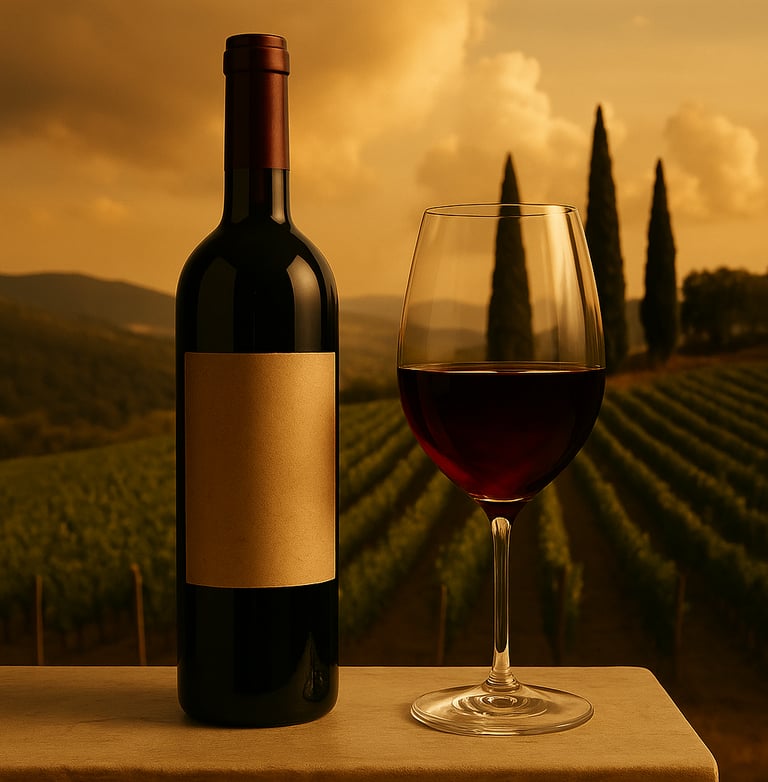
Fine Wine as a Representation of a Sophisticated Territory
10/30/2025


Introduction: A Wine May Express Terroir, but It Does Not Always Represent a Culture
Not every brand that works with origin builds territorial identity. And not every wine region succeeds in consolidating itself as a symbol of sophistication. In the world of luxury, territory is not flaunted — it is transformed into an emotional, aesthetic, and cultural experience, conveyed with precision, narrative, and consistency. When that happens, wine ceases to be merely a product of a geographical area and becomes a refined emblem of that place before the world.
Wine Is Not Only Born from a Place: It Can Represent It
Some wineries mention their DO as a technical fact, while others manage to make their wine evoke landscapes, architecture, tone of voice, local sensibility, and even a worldview. A brand aspiring to territorial high-end status does not simply sell origin: it sells interpretation, belonging, and encoded culture.
Raventós i Blanc does not just communicate Catalan terroir. It communicates a philosophical system linked to the land, to symbolic independence, and to a reinterpreted language of origin.
What Does It Mean to Sophisticate a Territory Through Wine?
To sophisticate is not to turn a place into a spectacle. It is to make its complexity legible — sensitively and meaningfully — for discerning international audiences.
To sophisticate a territory means:
Elevating its narrative from truth, not folklore.
Building recognisable and elegant symbols (architecture, design, narrative, visual aesthetics).
Involving cultural figures who legitimise the discourse.
Generating cross-sector alliances (art, gastronomy, landscape, education).
Escaping the tourist postcard and creating a curated voice with strategic vision.
The Douro (Portugal) has managed to project itself as a fine wine destination without renouncing its history or its dramatic landscape. Today, names like Quinta do Crasto or Wine & Soul do more than sell wine: they sell a refined interpretation of the river, of matter, and of time.
When Wine Sparks Desire for a Region
A well-positioned brand can become the symbolic gateway to a territory.
Sassicaia (Bolgheri) not only consolidated a category (Super Tuscan), but transformed a secondary region into a global high-end reference. Today, visiting Bolgheri means understanding an aesthetic system: sober architecture, olive trees, cypresses, marble, silence.
This phenomenon occurs when wine manages to:
Move through its singularity.
Appear in relevant cultural contexts.
Be accompanied by a carefully crafted aesthetic narrative.
Remain consistent over time, without trying to please everyone.
Mistakes That Prevent a Region from Becoming Sophisticated Through Wine
Turning tradition into a nostalgic argument.
Associating origin with stereotypical imagery (villages, countryside, “authenticity” without curation).
Designing from the literal instead of the symbolic.
Overcommunicating without aesthetic strategy.
A wine can have origin, but if that origin is not well interpreted and elevated, it ends up being just another coordinate — not a symbolic territory.
Keys to Building a Sophisticated Territorial Brand
Create a narrative where wine is the spokesperson, not the protagonist. The story belongs to the place, not just the winery.
Design a visual identity from the essential. It is not necessary to show the entire landscape — it is enough to suggest it with symbolic strength.
Engage with other local cultural actors who elevate the discourse. Architects, chefs, artists, musicians, writers.
Choose where to appear. Not every channel communicates sophistication. Not every visitor is the desired one.
Conclusion: When Wine Speaks Well, the World Listens to the Territory
A great wine can be technically flawless. But a wine that sensitively represents its territory generates symbolic capital that is both inimitable and unforgettable.
🍷 Because in luxury, what matters most is not what the product says about itself, but what it makes the world think about the place it comes from.

